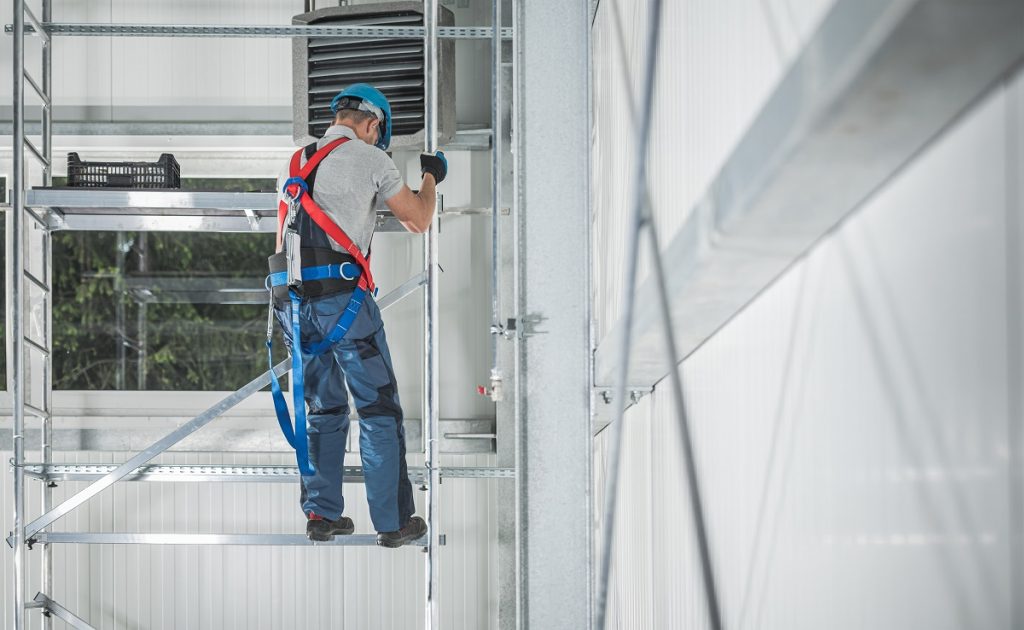What are the advantages of scaffolding in construction?
- Improves access
- Better worker safety
- Sturdy
- Easy to assemble
- Cost-effective
Scaffolding is a common fixture in any kind of construction work. This is a temporary structure that provides support for construction workers. It also acts as a primary framework to support building materials such as concrete, wood, glass, metal, and the like. Aside from these, there are also other advantages of scaffolding in construction. They allow construction workers to access high and difficult-to-reach areas of a building for plastering, paneling, masonry, painting, welding, concreting, and the like. When setting up scaffolding, it’s important to prioritize not only functionality but also safety when it’s being used in the industry. Continue reading to learn more.
Improves Access
Especially in high-rise and mid-height buildings, scaffolding is important to provide construction workers with easy access to different parts of a building. Most scaffolding types also include stairways or access-ways in order to allow works to reach the designated building level.
For example, when there is a need to install windows on a certain floor, the scaffolding allows for easier access. This reduces the need for impractical structures such as ladders which may be limited in their capacity, or boom lifts which may be expensive.
With the ease of access, workers can use the scaffolding to undertake a range of construction work in a safe and convenient manner. They’re also able to devote more of their time to core construction activities simply by taking advantage of scaffolding.
Better Worker Safety
Construction sites are riddled with safety risks and hazards. This is why on-site personnel is always required to be mindful of these risks, wear the right protective equipment, and make use of sturdy structures.
Apart from improving the ease of access to different parts of a building, scaffolding is also crucial in ensuring working safety. Steel scaffolding, for example, can be made up of steel pipes that are connected by fittings and other couplings to form a stable network. Unlike other materials, steel pipes are better at distributing weight evenly — this is an important consideration especially when there are two or more workers using the scaffolding at any given time.
With even weight distribution and improved capacity to bear heavier loads, steel scaffolding helps keep workers safe. The entire structure remains stable, even after prolonged usage.
Sturdy
Although variations of scaffolding exist, there are several main components that are always present. These are the standards, ledgers, scaffold tubes/pipes, couplers, decks, railings, stairways, braces, and base plates. On their own, these components already have a number of useful properties. Combined all together, however, they create a simple, yet incredibly sturdy framework that makes the scaffolding a reliable addition to any construction site.
The standards, for example, are tubes that are perpendicularly installed in the scaffolding. They allow even load distribution, especially in cases wherein the weight of the scaffolding may shift.
Another component, the deck, is what supports workers when moving from one side to another, at a height. Scaffolding tubes may also be used to support the deck and hold it in place. It can also be used to improve the safety features of the scaffolding, as it also protects workers from live cables and other electrical risks that may be present.
Easy to Assemble
Construction projects are always a race against time. In fact, several factors may lead to the delay of a construction project, such as improper budget planning, inadequate resources, hazards, lack of permits, or limited manpower. To avoid these delays, construction managers have to see to it that every aspect of the project is accounted for, even something as small as the scaffolding.
Knowing all of these, something as small as the scaffolding can be influential in the on-time completion of any given construction project. This is due to the structure’s easy assembly and dismantling. Depending on the scale of the job, scaffolding can be set up in as short as two hours to two days. Likewise, when it’s time to dismantle the scaffolding, workers don’t have to exert too much effort, as it can be done in a short time span.
Cost-Effective
Scaffolding is made out of affordable and readily-available materials, making them one of the most cost-effective solutions for any construction job. Steel scaffolding in particular provides more value to the industry because of its strength and budget-friendliness. Compared to other materials like wood or aluminum, steel is far cheaper (by the pound) and is specifically designed to withstand heavy loads.
Say, for example, you’re working with a tight budget for your construction project. Instead of using wood as a scaffolding material, you can opt for steel instead. In this way, your scaffolding is better protected against external elements that may cause damage to it.
For projects that are designed to be completed over a long time span, steel scaffolding makes for a practical choice, as it also minimizes the need for costly repairs and maintenance.
Key Takeaway
Easy accessibility, cost-effective, sturdy, and improved safety are just a few of the many advantages of scaffolding in construction. Although they’re a temporary fixture, scaffolding is essential in every phase of the project.
Scaffolding allows workers to safely work on different building heights, while also improving their productivity. While scaffolding is not a new innovation in the industry, its persistent use makes them one of the most reliable structures in completing any given project.
